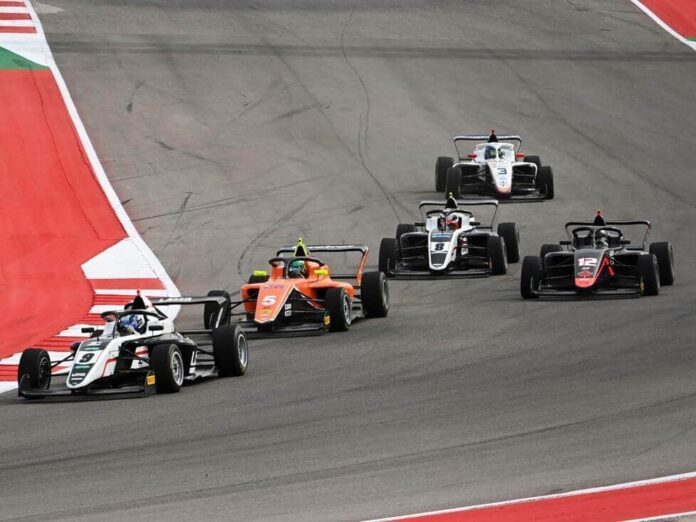The F1 Academy has made changes to the women’s series for the 2024 season – racing will take place as part of Formula 1
The F1 Academy is entering its second season in 2024, but before the women go on the hunt for points in Formula 1, there are changes to the junior championship. Each of the ten Formula 1 teams will support one female driver from the F1 Academy field, while the other female drivers will work with other partners. In addition, the series’ races will be held as part of the Formula 1 program from the 2024 season onwards.
German Carry Schreiner will compete for Campos and is supported by Sauber. The 25-year-old from Völklingen in Saarland has already made a name for herself in GT racing and drove in the debut season of the F1 Academy. Schreiner finished eleventh back then and took her only win in the championship to date at Zandvoort. The 17-year-old Swiss driver Tina Hausmann, who previously raced in the Italian Formula 4, will make her F1 Academy debut for Prema with the support of Aston Martin.
Another prominent driver is Lia Block, the daughter of Ken Block, who was killed in a snowmobile accident and became famous for his Ghymkana videos and rallycross events. Lia Block has already driven in Extreme E for Carl Cox and shared the car with former DTM champion Timo Scheider. Mercedes has opted for Frenchman Dorian Pin, who has already proven his skills in prototypes and GT cars and will also be competing for Prema.
This is the format
But who is the F1 Academy actually aimed at? The aim of the championship is to give young female motorsport drivers the chance to show themselves on the big Formula 1 stage. The drivers are aged between 16 and 25 and are expected to make the leap from the series into the Formula 2 and Formula 3 junior series.
Susie Wolf is the Managing Director and, following the end of the W Series, the F1 Academy is the only all-female championship that is also supported by Formula 1. In 2023, the series did not yet race exclusively as part of the premier class and was also represented in Austin in the USA as well as Europe. Spaniard Marta Garcia was crowned the first female champion and plans to compete in the Formula Regional European Championship in 2024.
In the 2024 season, there will be two free practice sessions of 40 minutes each and two qualifying sessions of 15 minutes each per weekend. The first qualifying session will determine the starting grid for the first of three races, while the second qualifying session will determine the starting order for the third race. Both races will be held over a distance of 30 minutes plus one lap. The second race is over a distance of 20 minutes plus one lap, but the top 8 from the first qualifying session will be lined up in reverse order at the start
Women drive as part of Formula 1
The points system for races 1 and 3 corresponds to that of Formula 1 with 25 points for the winner and one point for the tenth-placed driver. In the second race with a reversed grid, ten points are awarded to the winner and one point to the eighth-placed driver. Two bonus points are awarded for pole positions and the fastest race laps are also rewarded with a bonus point. This means that a driver can collect a maximum of 67 points in one race weekend.
There are seven Formula 1 Grand Prix races: Jeddah in Saudi Arabia, Miami in the USA, Barcelona in Spain, Zandvoort in the Netherlands, Marina Bay in Singapore, Lusail in Qatar and Abu Dhabi in the United Arab Emirates. The Tatuus F4-T421, whose four-cylinder turbo engine produces 165 hp, will be used for the race. Pirelli supplies the standard tires. The car is also used in the Arabian, British and Italian Formula 4 as well as in the Formula Winter Series in Spain.
In 2023, the F1 Academy ran under the radar, as not a single race was broadcast live apart from the season finale. Only highlights of the races were produced. As of January 2024, it is not yet known whether live broadcasts of the races are planned for 2024





